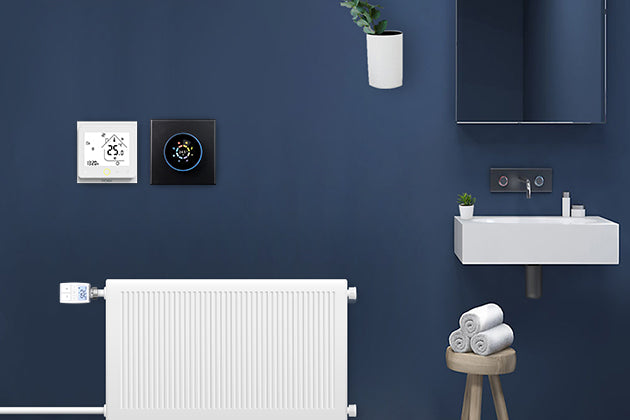Maintaining your car’s air conditioning (AC) system is essential for ensuring a comfortable ride, especially during the sweltering summer months. One critical aspect of maintaining your car’s AC system is regularly vacuuming it. The process of vacuuming a car AC system helps remove moisture and air from the system, improving the AC’s performance and prolonging its lifespan.
In this guide, we’ll cover everything you need to know about vacuuming a car AC system, including why it’s important, the tools you’ll need, and a step-by-step guide to vacuum the system properly.
Why is Vacuuming a Car AC System Important?
The car AC system works by circulating refrigerant through a series of components to cool the air inside the vehicle. However, air and moisture can sometimes get trapped inside the system, which can lead to inefficiencies and long-term damage. Here’s why vacuuming the system is essential:
- Prevents Contamination: Moisture inside the AC system can mix with refrigerant to create acids that can corrode the AC components.
- Removes Air: Air inside the system can cause the AC to work harder, reducing its cooling efficiency.
- Improves Performance: A properly vacuumed AC system ensures the refrigerant circulates effectively, delivering cooler air inside the cabin.
- Extends Lifespan: Regular vacuuming can help prevent costly repairs and extend the life of your AC system.
Tools You Will Need to Vacuum a Car AC System
Before you get started, it’s important to gather the necessary tools. Here’s a list of equipment you’ll need to effectively vacuum a car AC system:
- Vacuum Pump: This is the essential tool that removes air and moisture from the AC system.
- Manifold Gauge Set: Used to measure pressure in the system and ensure everything is working correctly.
- Refrigerant: You will need to recharge the system with refrigerant after vacuuming.
- Safety Gear: Wear gloves and goggles to protect yourself from refrigerant or oil spills.
- Hose Kit: The hoses connect the manifold gauge set to the vacuum pump and the car’s AC system.
Step-by-Step Guide to Vacuum a Car AC System
Vacuuming a car AC system might seem complicated, but by following these steps carefully, you can do it yourself and save some money on professional services.
Step 1: Locate the Low and High-Pressure Service Ports
The first thing you’ll need to do is locate the service ports on your car’s AC system. There are two ports:
- Low-Pressure Port: This port is usually located on the larger of the two AC lines and is where you will connect the vacuum pump.
- High-Pressure Port: Found on the smaller AC line, this port is used to recharge the system with refrigerant.
Make sure to identify both correctly as mixing them up can cause damage to the AC system.
Step 2: Connect the Manifold Gauge Set
Next, connect your manifold gauge set to both the high and low-pressure service ports on your car’s AC system. Attach the hoses carefully:
- Blue Hose: Connects to the low-pressure port.
- Red Hose: Connects to the high-pressure port.
- Yellow Hose: This goes to the vacuum pump or refrigerant canister, depending on the stage you are in.
Make sure the connections are tight to prevent any leaks.
Step 3: Attach the Vacuum Pump
Once the manifold gauge set is connected, it’s time to hook up the vacuum pump. Attach the yellow hose to the vacuum pump’s inlet. Ensure that the pump is turned off before connecting it to avoid any unexpected issues.
Step 4: Open the Valves on the Manifold Gauge Set
On the manifold gauge set, you’ll find two valves: one for the high-pressure side and one for the low-pressure side. Open both of these valves to allow the vacuum pump to remove air and moisture from the AC system. This step is crucial for ensuring that the system is fully vacuumed.
Step 5: Turn On the Vacuum Pump
Now, it’s time to start the vacuum pump. Turn it on and let it run for about 30-45 minutes. During this time, the pump will remove any moisture and air from the system.
- Tip: Keep an eye on the manifold gauge during this process. You should see the pressure drop into a vacuum state (around 29.92 inHg or inches of mercury).
Step 6: Monitor the Vacuum Pressure
After the vacuum pump has run for the designated time, turn it off and close the valves on the manifold gauge set. Let the system sit for around 15-30 minutes to ensure that there are no leaks.
- If the pressure holds steady: This means the system is properly sealed and ready for refrigerant.
- If the pressure rises: You likely have a leak in the system that will need to be addressed before moving on.
Step 7: Disconnect the Vacuum Pump
Once you’ve confirmed that the system is leak-free, it’s time to disconnect the vacuum pump. Turn off the vacuum pump and disconnect the yellow hose from the pump. Keep the manifold gauge set connected, as you’ll need it to recharge the system with refrigerant.
Step 8: Recharge the AC System with Refrigerant
Now that your car’s AC system is free of air and moisture, it’s time to recharge it with refrigerant. To do this:
- Connect the yellow hose from the manifold gauge set to the refrigerant canister.
- Slowly open the low-pressure valve to allow refrigerant into the system.
- Monitor the pressure levels to ensure you are adding the correct amount of refrigerant (consult your car’s manual for the correct refrigerant type and amount).
Step 9: Close the Valves and Disconnect the Gauge Set
Once you’ve added the correct amount of refrigerant, close the valves on the manifold gauge set. Carefully disconnect the hoses from the service ports, making sure not to release any refrigerant into the air.
Step 10: Test the AC System
Finally, start your car and turn on the air conditioning to test the system. If everything was done correctly, your AC should blow cold air efficiently, and you’ve successfully vacuumed and recharged your car’s AC system.
How Often Should You Vacuum a Car AC System?
The frequency of vacuuming a car AC system depends on the condition of the AC components and usage. Generally, you should vacuum the AC system whenever you:
- Replace a major AC component (like the compressor or condenser).
- Suspect a refrigerant leak or system contamination.
- Notice that the AC isn’t cooling as well as it used to.
Conclusion
Vacuuming your car AC system is an essential maintenance task that helps to remove air and moisture, improving performance and extending the lifespan of your AC components. While it may seem like a complicated task, with the right tools and following the step-by-step process outlined above, you can vacuum your car AC system yourself and ensure optimal operation.
By taking care of your AC system, you’ll enjoy cooler drives and avoid expensive repairs down the road.















